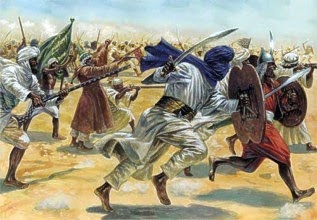Government of India Act, 1909 (Minto-Morley Reforms) by taimoor gondhal
Background
By 1909 the political turmoil and unrest prevailed in India. The Extremists Hindu and Congress activities had forced the Muslims to give a serious thought to their future line of action in order to protect and safeguard their interests as a nation. By now the Muslims had come to realize with firmness that they were a separate nation. The demand for separate electorate by the Simla Deputation and later by the Muslim League was the first step taken into the direction to protect and maintain the separate image of the Muslims.
Minto-Morley Reforms
The British Government had realized the importance of Muslim’s anxiety about their future and was convinced that the present constitutional provisions were inadequate to provide safeguards to the Muslims. The Government therefore, decided to introduce new constitutional reforms to dispel Muslim suspicions. The Government made it clear that it was in favour of giving more rights to the Indian people. The Viceroy Lord Minto in accordance with the policy of the Government set to the task of preparing a draft Bill, in collaboration with Lord Morley, the Secretary of State for India, for the introduction of constitutional reforms. The Bill was prepared and presented in the Parliament for approval. The Bill, after approval by the Parliament and Royal Assent, was enforced in 1909 and came to be known as Minto-Morley Reforms of 1909.
Salient Features, Government of India Act 1909
The Act contained the following provisions:
· Separate Electorate was accepted for minorities.
· The preparation of separate electoral rolls was ordered.
· The Legislative Councils were expanded.
· The authority of the Council was enhanced. The members were given more liberties. Members were allowed to present Resolutions, discuss Budget and put up questions.
· The Viceroy’s Council’s membership was fixed at sixty members.
· The membership of the provinces of Bengal, U.P., Bihar, Bombay, Madras and Orissa was fixed at 50 members whereas the membership of the provinces of Punjab, Burma, and Assam was fixed at 30 members.
· The Indian were included in the Executive Council of the Viceroy and in the provincial Executive Councils.
· The local bodies, trade unions and universities were allowed to elect their members.
· Lt. Governors were appointed in Bengal, Bombay and Madras. These provinces were given right to form their own Councils.
Defects of Minto-Morley Reforms
There were some inherent defects in Minto-Morley Reforms due to which the Minto-Morley Scheme could not last very long. These reforms had following defects:
· The Minto-Morley Reforms did not provide for mode of electing the representatives.
· The system failed to develop a sense of accountability among the representatives.
· The voting rights were squeezed which made the electorate too narrow and restricted.
· The authority given to the elected members of raising questions and criticizing the policies proved useless as the real legislative authority rested with the Government and its nominated persons.
· The legislative bodies lacked effective control on the Government agencies.
· The Central Government exercised vast authority in the financial sphere. Provincial expenditures were controlled by the Central Government which could cut the provincial expenditures at will.
Significance of Minto-Morley Reforms
Following is the importance of Minto-Morley Reforms:
· The Minto-Morley Reforms gave impetus to the constitutional development in India.
· These reforms introduced the system of elections for the first time which created a great deal of political awareness among the Indian people.
· The acceptance of separate electorate for the Muslims enhanced their political importance and significance.
Conclusion
The importance and utility of Minto-Morley Reforms cannot be set aside because of some weaknesses in the scheme. It acceded the Muslims, their much cherished demand, the separate electorate in the provinces where legislative councils existed. The Muslim League performed in a commendable manner by achieving major demands of the Muslims after only two years of its inception. It scored an amazing political triumph within a short time of its political struggle. The separate electorate set the course of Muslim freedom movement which culminated in the shape of Pakistan after a forty years intense struggle. It also gave strength to the Two-Nation Theory which became the basis of Muslim freedom struggle.








Comments
Post a Comment